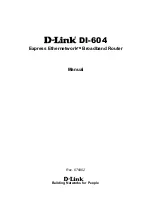
Chapter 1 Preparing for a WLAN Deployment
16
Aerohive
Site Surveys
One of the first questions IT managers ask when they are preparing for a WLAN deployment is whether or not a site
survey should be performed. In a site survey, the administrator walks around the facility with a site survey tool to
measure the RF (radio frequency) coverage of a test access point or the existing WLAN infrastructure.
Whether or not you decide to do a site survey for your enterprise depends on the cost of the survey and the
complexity of the environment. The three ways to deploy a wireless network—with and without a site survey—are
explained below:
•
Predeployment Survey
The safest approach is to perform a site survey before deployment to determine the best locations for the
access points. Typically, site survey professionals temporarily place access points in different locations, take
measurements, and adjust their settings and locations as necessary. After they complete the survey, they
install the access points, and then perform another site survey to confirm that the goals have been
achieved. This method is clearly the most reliable way to deploy a wireless network; however, it can be
expensive, time consuming, and impractical if an enterprise has many sites.
•
Deploy and Check
In this scenario, an initial site survey is not performed. Instead, wireless administrators make educated
guesses on the best locations for the access points or they use a planning tool to determine the locations
more reliably. After deploying the access points, the administrators do a quick site survey. If they need to
provide greater coverage, they deploy additional access points. If there are areas where access points are
interfering with each other, they then relocate one or more of them. With the Aerohive cooperative RF
control, HiveAPs automatically adjust their channel and power to compensate for coverage gaps and areas
of interference.
The deploy-and-check approach is often much cheaper and faster than doing a predeployment site survey.
The risk is that you might have to move some access points and CAT5 (Category 5) Ethernet cables if you do
not plan properly. Aerohive provides a huge competitive advantage in the deploy-and-check approach,
thanks to its flexible mesh networking capability. An administrator can deploy with mesh (before running
wires) and check the performance in several layouts, determine the best layout, and then run the wires to
their final location.
•
Deploy without Survey
While it is usually advisable to do a site survey, there are many situations in which it is not feasible or even
necessary. If the location is sufficiently small—for example, a deployment of only three or fewer access
points—site surveys have limited value because there is virtually no opportunity for interference. If there
are numerous remote locations, a site survey might be impractical because of the cost of traveling to each
site. In these locations, you can use a slightly denser deployment to ensure appropriate coverage and
capacity. With Aerohive Cooperative RF control, HiveAPs automatically adjust their radio power levels to
ensure that there is minimal overlap from interfering channels. Usually the cost of extra access points is
offset by the cost saved by not doing a site survey in a remote location.
Содержание access point
Страница 1: ...Aerohive Deployment Guide ...
Страница 7: ...HiveAP Compliance Information 6 Aerohive ...
Страница 13: ...Contents 12 Aerohive ...
Страница 37: ...Chapter 2 The HiveAP 20 ag Platform 36 Aerohive ...
Страница 71: ...Chapter 4 The HiveAP 340 Platform 70 Aerohive ...
Страница 81: ...Chapter 5 The HiveAP 320 Platform 80 Aerohive ...
Страница 105: ...Chapter 8 The High Capacity HiveManager Platform 104 Aerohive ...
Страница 123: ...Chapter 10 Using HiveManager 122 Aerohive ...
Страница 209: ...Chapter 14 Deployment Examples CLI 208 Aerohive ...
Страница 217: ...Appenidix A Country Codes 216 Aerohive ...
















































